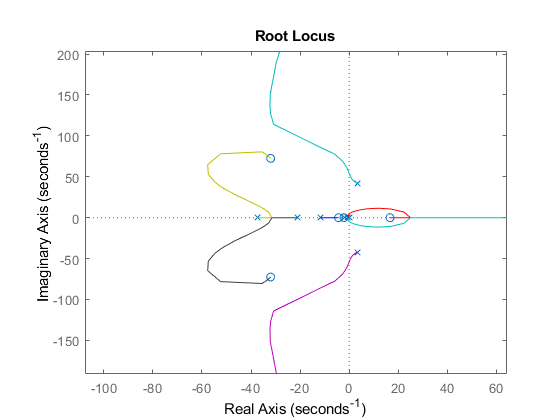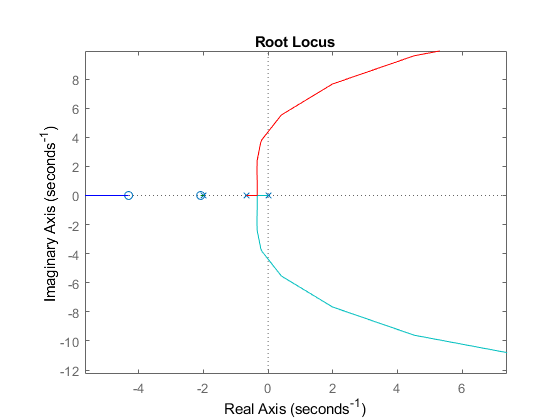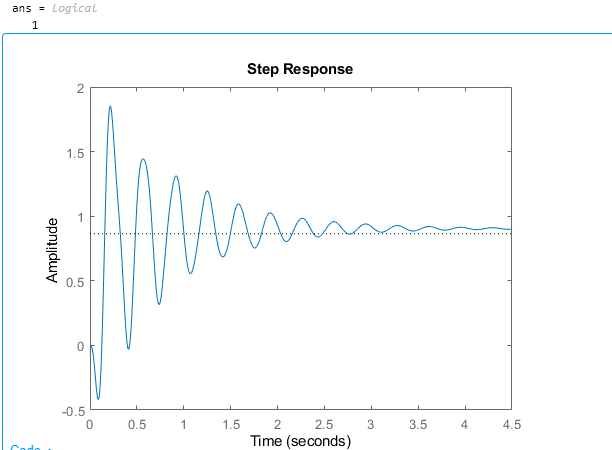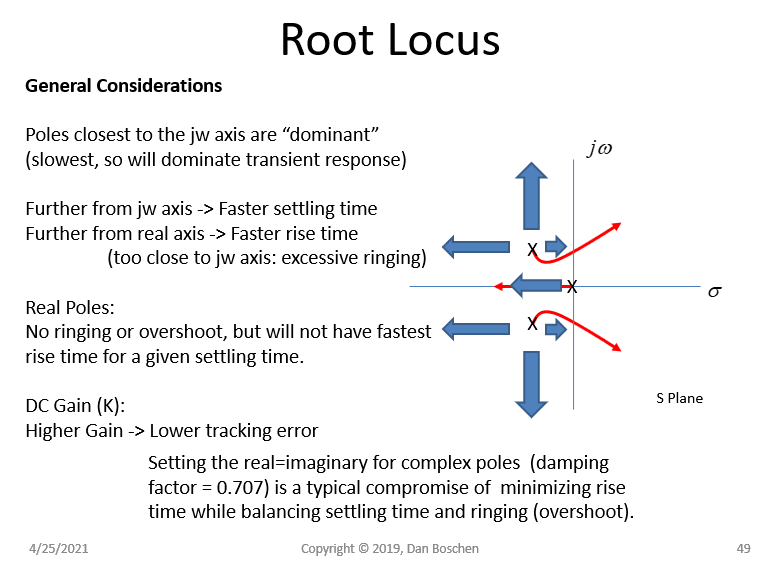I have a system with the transfer function given in this MATLAB code
num = [-2.341e07 -2.478e10 -1.393e12 -2.58e13 - 1.027e14 1.689e15 1.474e16 2.227e16];
den = [1 2474 1.451e06 2.622e08 1.544e10 6.874e11 2.656e13 5.294e14 4.09e15 8.13e15 3.771e15 1.122e13];
G2 = tf(num,den);
The system has 2 poles and 1 zero in the RHP. The poles are a complex conjugated pair.
ans =
1.0e+03 *
-1.7134 + 0.0000i
-0.4939 + 0.0000i
-0.2000 + 0.0000i
0.0032 + 0.0424i
0.0032 - 0.0424i
-0.0375 + 0.0000i
-0.0211 + 0.0000i
-0.0117 + 0.0000i
-0.0020 + 0.0000i
-0.0007 + 0.0000i
-0.0000 + 0.0000i
This obviously makes the system unstable, but how do I stabilize the system? I have read that you can cancel out poles in RHP by adding a zero in the exact same spot, however it was not recommended and I am not sure how you would do that when the pole is complex.
Looking at the root locus plot, however, shows me that if the unstable poles will move to the LHP with appropriate gain (the cyan and purple are the unstable poles):-
But the problem is, that if I add a gain high enough such that the unstable poles move to the left, then some of the poles in the LHP will move to the RHP in the process:-
Edit
I made it stable! I added this term $G_d = \frac{s+0.002}{0.002s+1}$ and also a gain of $Kp = 1.6 $ to the forward branch. The closed loop step response with unity feedback looks like this (the 1 at the top indicates a stable system):-
The next step is just to remove the oscillations and improve settling time.




